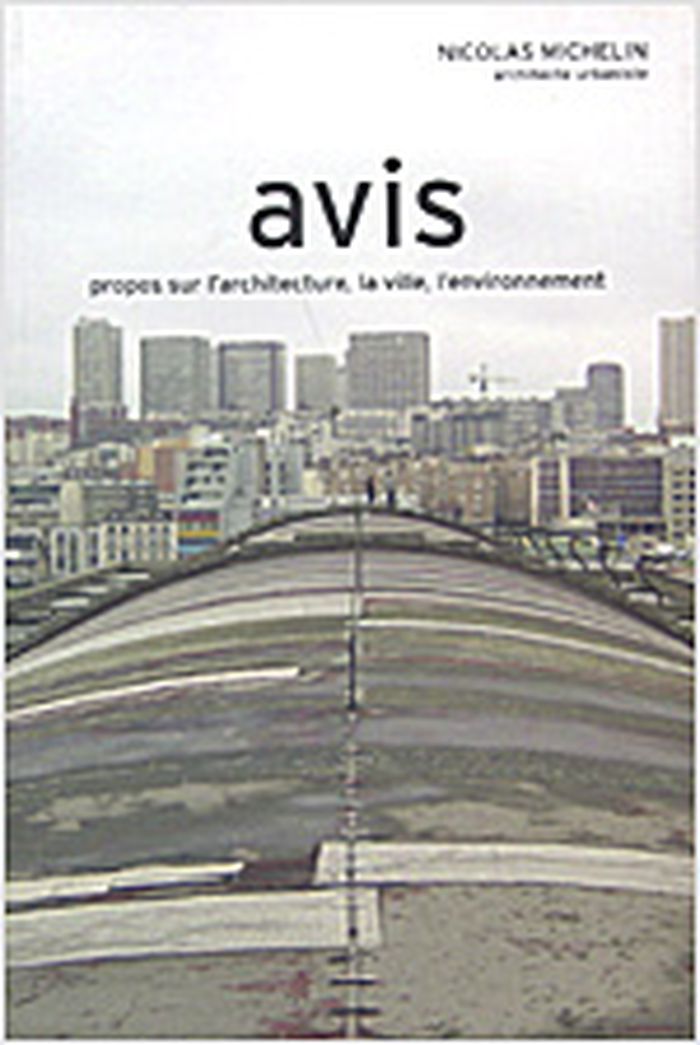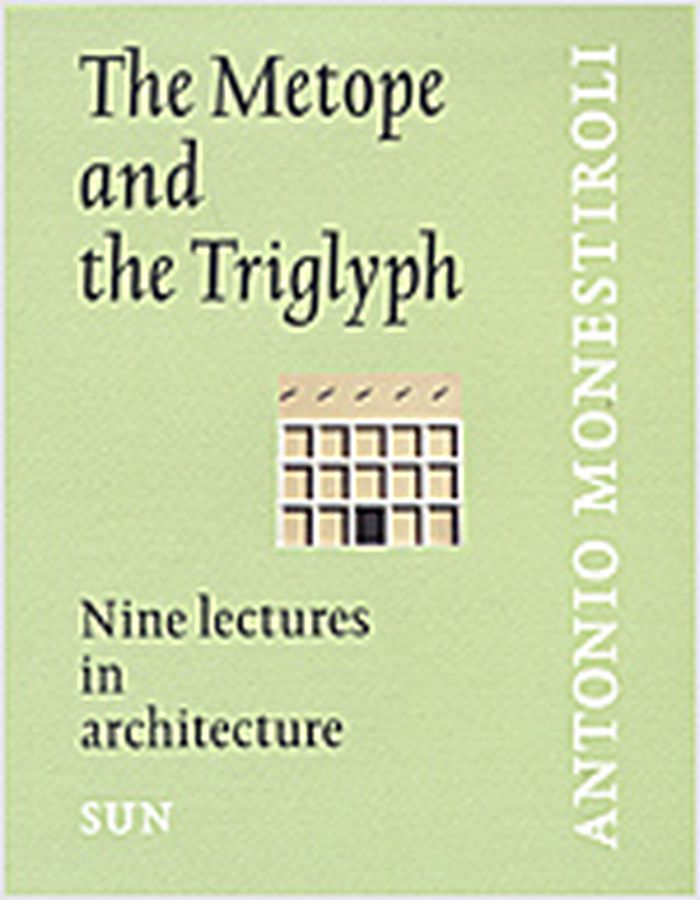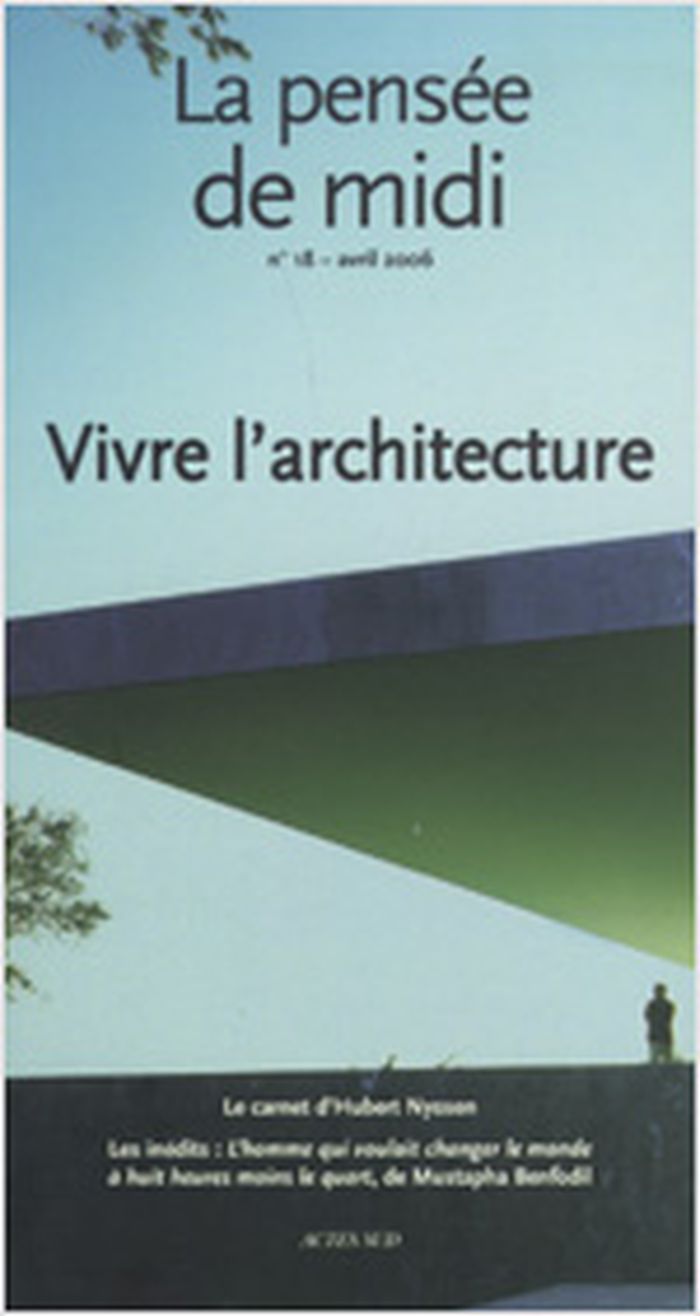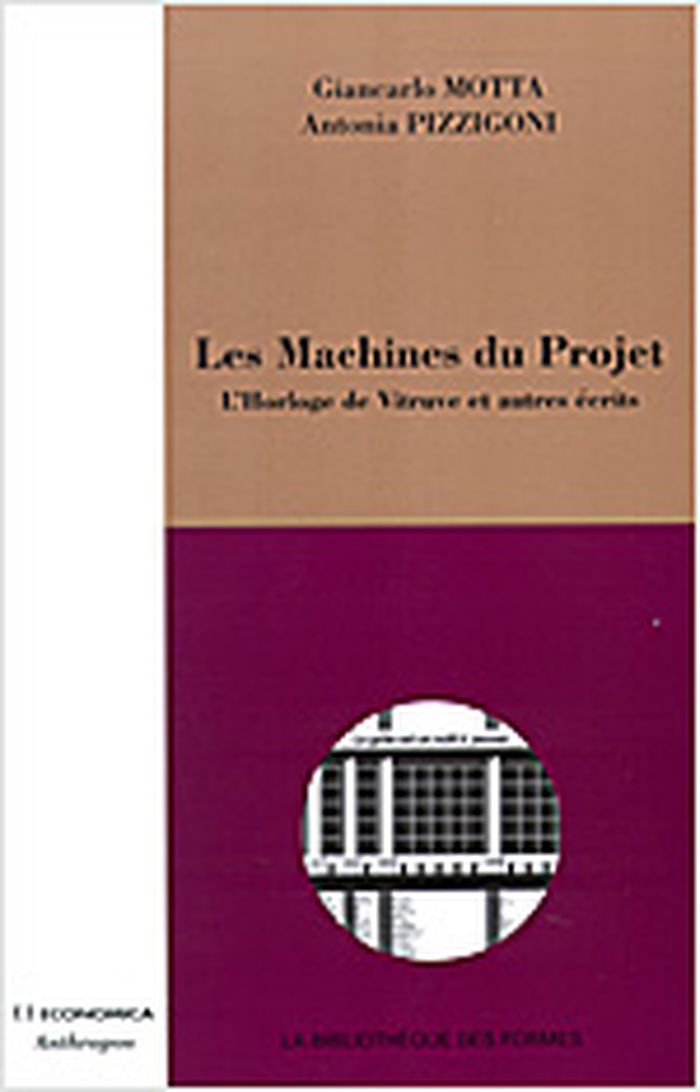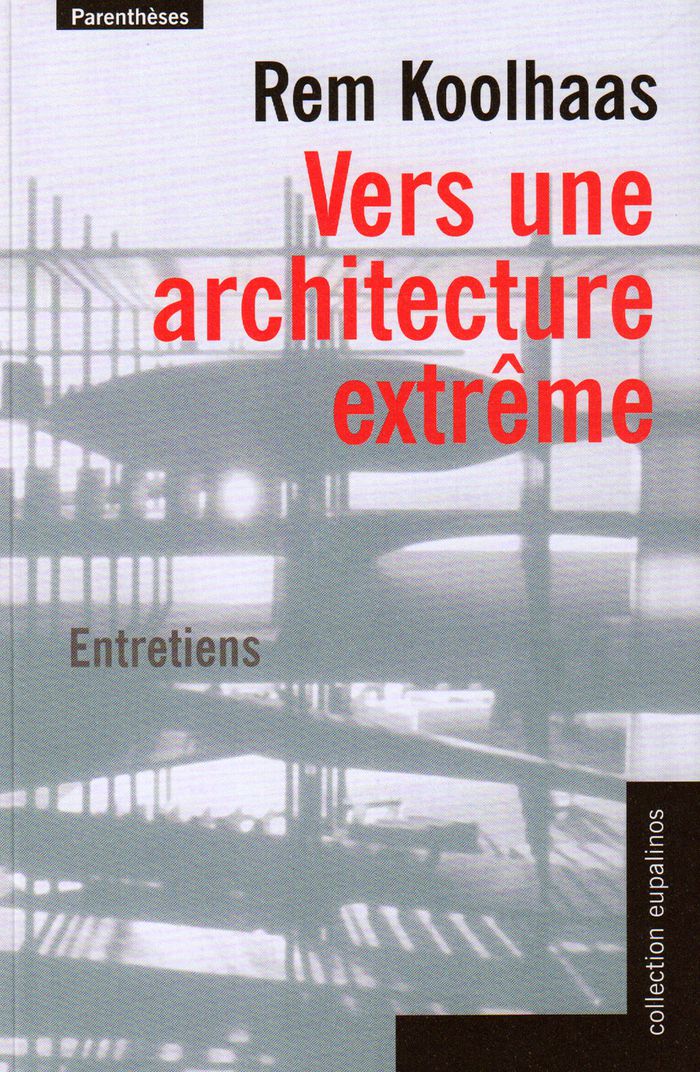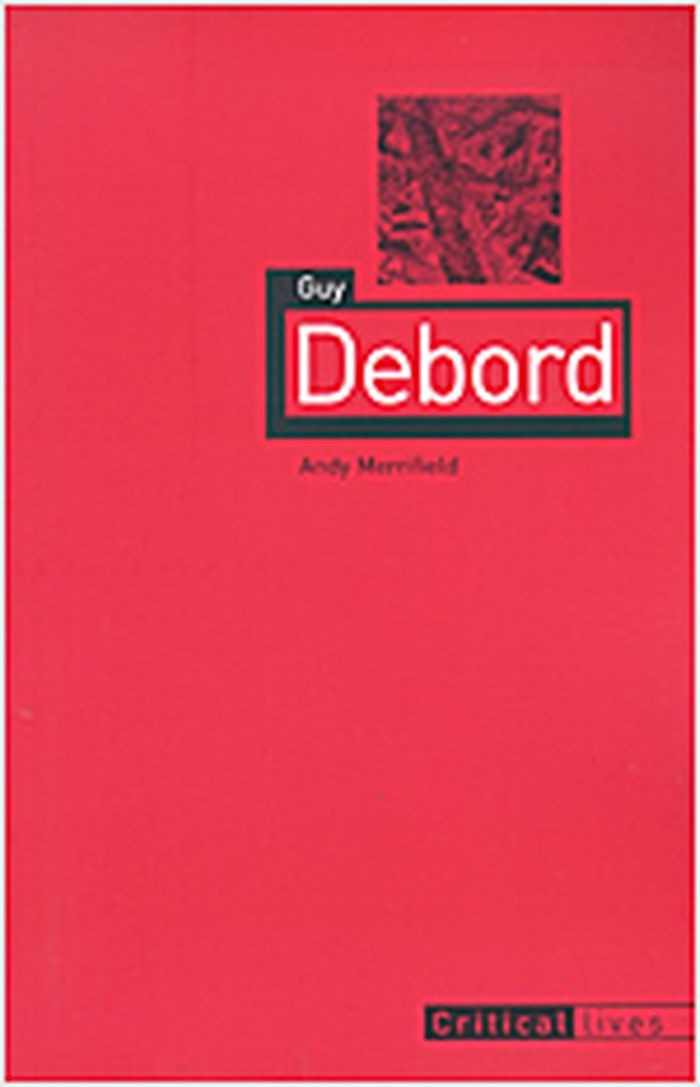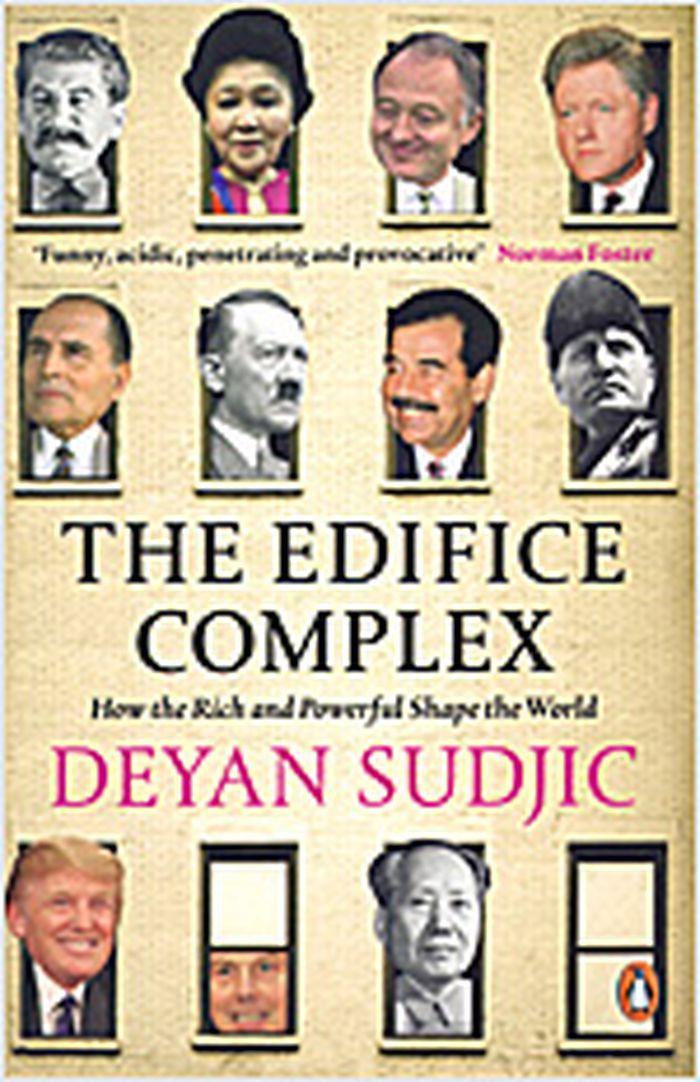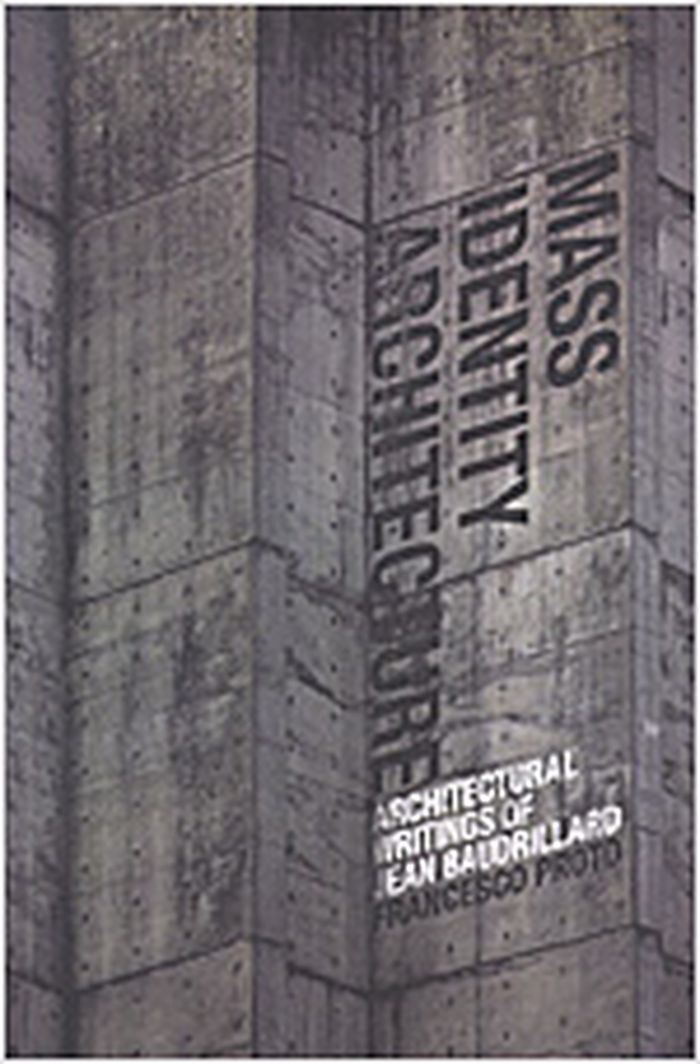$28.50
(disponible sur commande)
Résumé:
Architecte urbaniste, Nicolas Michelin prend la parole et témoigne du rôle de l’architecte face aux enjeux majeurs de la société aujourd’hui. En prise avec l’actualité - crise des banlieues, développement durable -, mais aussi avec les conditions d’exercice de l’architecture - contrainte des programmes, standardisation des typologies, poids des normes, carcan des(...)
Avis : propos sur l'architecture, la ville, l'environnement
Actions:
Prix:
$28.50
(disponible sur commande)
Résumé:
Architecte urbaniste, Nicolas Michelin prend la parole et témoigne du rôle de l’architecte face aux enjeux majeurs de la société aujourd’hui. En prise avec l’actualité - crise des banlieues, développement durable -, mais aussi avec les conditions d’exercice de l’architecture - contrainte des programmes, standardisation des typologies, poids des normes, carcan des budgets - les textes réunis ici sont l’expression de préoccupations et de réflexions sur le rôle de l’architecte aujourd’hui. Avant-propos de Catherine Pierre.
Théorie de l’architecture
$34.50
(disponible sur commande)
Résumé:
Collection of lectures, presented at various occasions over the last twenty years, wherein Antonio Monestiroli argues for the need of a theory of design based on a unitary viewpoint on architecture in a time when such a viewpoint seems to be lost.
The metope and the triglyph : nine lectures in architecture
Actions:
Prix:
$34.50
(disponible sur commande)
Résumé:
Collection of lectures, presented at various occasions over the last twenty years, wherein Antonio Monestiroli argues for the need of a theory of design based on a unitary viewpoint on architecture in a time when such a viewpoint seems to be lost.
Théorie de l’architecture
livres
$44.95
(disponible sur commande)
Résumé:
In this rapidly globalizing world, any investigation of architecture inevitably leads to considerations of regionalism. But despite its omnipresence in contemporary practice and theory, architectural regionalism remains a fluid concept, its historical development and current influence largely undocumented. This comprehensive reader brings together over 40 key essays(...)
Architectural regionalism : collected writings on place, identity, modernity, and tradition
Actions:
Prix:
$44.95
(disponible sur commande)
Résumé:
In this rapidly globalizing world, any investigation of architecture inevitably leads to considerations of regionalism. But despite its omnipresence in contemporary practice and theory, architectural regionalism remains a fluid concept, its historical development and current influence largely undocumented. This comprehensive reader brings together over 40 key essays illustrating the full range of ideas embodied by the term. Authored by important critics, historians, and architects such as Kenneth Frampton, Lewis Mumford, Sigfried Giedion, and Alan Colquhoun, Architectural Regionalism represents the history of regionalist thinking in architecture from the early twentieth century to today.
livres
mai 2007, New York
Théorie de l’architecture
$27.50
(disponible en magasin)
Résumé:
L'architecture est à la mode, et pourtant elle n'a jamais autant manqué à notre culture commune. A l'heure où des objets architecturaux spectaculaires mais coupés de la vie sociale semblent l'emporter sur le rêve collectif, La pensée de midi a convié architectes, urbanistes, paysagistes, designers, historiens et écrivains à faire le point sur notre manière d'habiter le(...)
La pensée de midi no. 18 : vivre l'architecture
Actions:
Prix:
$27.50
(disponible en magasin)
Résumé:
L'architecture est à la mode, et pourtant elle n'a jamais autant manqué à notre culture commune. A l'heure où des objets architecturaux spectaculaires mais coupés de la vie sociale semblent l'emporter sur le rêve collectif, La pensée de midi a convié architectes, urbanistes, paysagistes, designers, historiens et écrivains à faire le point sur notre manière d'habiter le monde, singulièrement en Méditerranée. Un dossier pour réinventer d'autres façons de vivre ensemble dans l'espace urbain.
Théorie de l’architecture
$39.95
(disponible en magasin)
Résumé:
En Europe un débat existe qui vise à comprendre si l'on peut, aujourd'hui, parler de recherche sur le projet en architecture. Et encore, quelle devrait être une recherche sur le projet ? Est-il possible de trouver une relation entre la recherche et la pratique du projet ? " Les machines du projet " constituent la réponse que les auteurs donnent aux questions posées à(...)
Théorie de l’architecture
avril 2006, Paris
Les machines du projet : l'horloge de Vitruve et autres écrits
Actions:
Prix:
$39.95
(disponible en magasin)
Résumé:
En Europe un débat existe qui vise à comprendre si l'on peut, aujourd'hui, parler de recherche sur le projet en architecture. Et encore, quelle devrait être une recherche sur le projet ? Est-il possible de trouver une relation entre la recherche et la pratique du projet ? " Les machines du projet " constituent la réponse que les auteurs donnent aux questions posées à partir d'un travail de recherche d'une dizaine d'années. Ce livre veut documenter cette recherche qui considère le projet surtout comme une manière d'étudier l'architecture ainsi que comme un instrument pour la produire. Reconnaître le rôle que les techniques jouent dans le projet, en particulier celles de la représentation, ouvre le chemin à l'étude de son fonctionnement. La nature technique de ses procédés permet de parler du projet comme d'une " machine ". De cette machine dépend la possibilité du projet de se situer au centre de l'instabilité et de régir les contradictions entre nouveauté et tradition, entre généralités et apports personnels, entre archétypes et solutions que la pensée moderne a introduites dans l'architecture. C'est le cas des relations entre la tradition du projet d'architecture et le rapide développement des technologies informatiques.
Théorie de l’architecture
$19.95
(disponible sur commande)
Résumé:
La main de Kahn, levée à mi-distance entre lui et nous, représente un lien mythique entre l'imagination de l'architecte et son oeuvre construit (la main du charpentier et celle du maçon viennent aussi à l'esprit par proximité professionnelle). Mais la main de Kahn est ouverte, vide, libérée des affres de la construction, libre de tout crayon ou té. Comme le mouvement d'un(...)
Lumière blanche, ombre noire : entretiens
Actions:
Prix:
$19.95
(disponible sur commande)
Résumé:
La main de Kahn, levée à mi-distance entre lui et nous, représente un lien mythique entre l'imagination de l'architecte et son oeuvre construit (la main du charpentier et celle du maçon viennent aussi à l'esprit par proximité professionnelle). Mais la main de Kahn est ouverte, vide, libérée des affres de la construction, libre de tout crayon ou té. Comme le mouvement d'un oiseau, ce geste de la main s'impose, promesse non d'une construction, mais du construit en utilisation, liaison synoptique entre le sujet et l'objet. Une telle architecture en soi est tout sauf un pauvre fac-similé de main. Dans la main réside le rêve ultime d'une architecture vivante.
Théorie de l’architecture
$19.95
(disponible sur commande)
Résumé:
Convertir l’optimisme en danger et laisser celui-ci s’exprimer forment un ensemble d’opérations dont on peut dire qu’il a toujours figuré au coeur du programme architectural de Rem Koolhaas. Cependant, il n’a jamais été aussi clairement explicité que dans ce livre-manifeste. L’optimisme de Koolhaas est dual : il nous affirme non seulement que l’architecture doit se(...)
Vers une architecture extrême
Actions:
Prix:
$19.95
(disponible sur commande)
Résumé:
Convertir l’optimisme en danger et laisser celui-ci s’exprimer forment un ensemble d’opérations dont on peut dire qu’il a toujours figuré au coeur du programme architectural de Rem Koolhaas. Cependant, il n’a jamais été aussi clairement explicité que dans ce livre-manifeste. L’optimisme de Koolhaas est dual : il nous affirme non seulement que l’architecture doit se détourner de la vanité et du narcissisme confortables qui continuent à la protéger des réalités aléatoires de la bienséance historique, mais aussi que la spéculation architecturale doit se recentrer pragmatiquement, sur « la découverte de nouveaux potentiels dans les conditions existantes » sur « le cadrage des transformations inévitables et des forces de la modernisation, et la recherche de leurs articulations ». L’architecture sérieuse doit concrètement désirer être dangereuse.
Théorie de l’architecture
Guy Debord
$21.50
(disponible sur commande)
Résumé:
Guy Debord (1931–94) was one of the most important and intriguing intellectual figures of the twentieth century. Filmmaker and poet, urban critic and political theorist, adventurer and activist extraordinaire during Paris’s May 1968 uprisings, Debord was simultaneously behind and ahead of his times. Best-known as guru of the avant-garde revolutionary movement the(...)
Guy Debord
Actions:
Prix:
$21.50
(disponible sur commande)
Résumé:
Guy Debord (1931–94) was one of the most important and intriguing intellectual figures of the twentieth century. Filmmaker and poet, urban critic and political theorist, adventurer and activist extraordinaire during Paris’s May 1968 uprisings, Debord was simultaneously behind and ahead of his times. Best-known as guru of the avant-garde revolutionary movement the Situationist International (1957-72), and for a classic indictment of post-war capitalist consumerism The Society of the Spectacle (1967), Debord’s life and work remains fascinating to this day. Yet the man himself remained elusive and enigmatic throughout his life. Master urban tactician in the 1950s, political muckraker, organizer and theorist during the 1960s, vagabond throughout the 1970s, fleeing to Spain and Italy, he lived as a recluse during the 1980s and early 1990s in an isolated farmhouse in Champot (Auvergne), behind a high stone wall. Guy Debord crosses over that Champot wall, pushes back Debord’s shutters and peers through his windows. It crosses his threshold, drinks his wine, and listens to him talk. Andrew Merrifield focuses on the particulars of Debord’s life, shedding light on this admirable yet apparently impenetrable figure, a free spirit who was radically at odds with life but at the same time loved many things in it, and thought them worth fighting for. The book reveals the dynamics of the man, his ideas, and his times – which have much to say to our own, equally troubled times. The ideas of Guy Debord, who died only 10 years ago, continue to expose the fragility of our democracy and the mismatch between people and political power today; this book shows that the lessons of Debord are as fresh, subversive, and relevant now as they were forty years ago.
Théorie de l’architecture
$18.00
(disponible sur commande)
Résumé:
"The edifice complex" explores the intimate and inextricable relationship between power, money and architecture in the twentieth century. How and why have presidents, prime ministers, mayors, millionaires and bishops come to share such a fascination with grand designs? From Blair to Mitterrand, from Hitler to Stalin to Saddam Hussein, architecture has become an end in(...)
The edifice complex : how the rich and powerful shape the world
Actions:
Prix:
$18.00
(disponible sur commande)
Résumé:
"The edifice complex" explores the intimate and inextricable relationship between power, money and architecture in the twentieth century. How and why have presidents, prime ministers, mayors, millionaires and bishops come to share such a fascination with grand designs? From Blair to Mitterrand, from Hitler to Stalin to Saddam Hussein, architecture has become an end in itself, as well as a means to an end. This is a book of genuine timeliness, throwing new light on the motivations of the rich and powerful around the world - and on the ways they seek to affect us.
Théorie de l’architecture
$51.99
(disponible sur commande)
Résumé:
Baudrillard has become incredibly popular in architecture in recent years and this is the first time that the work of one of the world’s greatest philosophers has been pulled together to present a complete assessment and understanding of it. In Baudrillard's terms, architecture could be seen as the supreme medium of contemporary visual culture, especially in its(...)
décembre 2005, Chichester
Mass identity architecture : architectural writings of Jean Beaudrillard
Actions:
Prix:
$51.99
(disponible sur commande)
Résumé:
Baudrillard has become incredibly popular in architecture in recent years and this is the first time that the work of one of the world’s greatest philosophers has been pulled together to present a complete assessment and understanding of it. In Baudrillard's terms, architecture could be seen as the supreme medium of contemporary visual culture, especially in its potential to influence the individual's perception of reality as a component of the massmedia system. This type of cultural analysis of the built environment is a relatively new idea in architectural criticism and this book provides the first invaluable directory for the reader. Proto uses extracts from Baudrillard's very own work, including previously unpublished material. Proto's style makes Baudrillard's work easy to read and easily accessible to readers in cultural studies, geography and art, as well as sociology and social theory.
